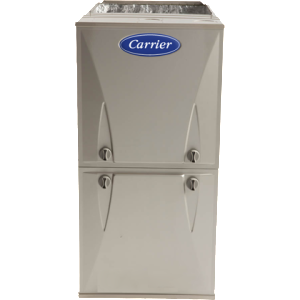
How Does Your Furnace Produce Heat?
Most homes throughout the country produce heat via a residential furnace. However, if you’re like most people, you may not totally understand how a furnace produces heat. We’re going to share the answer with you below so that you can have a better understanding of how your home’s furnace works to heat your home. Go Now and read more to learn further!
Understanding the Basic Processes
Before we dive into the specifics of how your furnace produces heat, we need to first address a few key processes. First, your furnace will start a heating cycle whenever your thermostat senses that the actual temperature is lower than your set temperature. Your thermostat does this by initiating a call to your furnace for it to produce heat.
While furnaces can burn different types of fuel, they all work in relatively the same way. A pilot light, direct ignition spark, or hot surface igniter turns on to heat your furnace’s burners. Your furnace will use its designated fuel to create heat. That heat is then sent throughout your home. Once your thermostat senses that the actual temperature has reached your set temperature, it will send a signal to the circuit board on your furnace to shut down.
Determining Your Furnace Type
To understand specifically how your furnace produces heat, you need to first understand what type of furnace you have. There are four main types, including natural gas, oil, electric, and propane. Natural gas furnaces are the most economical and most popular today. Oil furnaces utilize heating oil and are relatively cheaper to purchase. Electric furnaces rely on your electricity to produce heat and are more expensive to run than other options. If you need to ensure the safety of an electric line, make sure to seek help from an expert such as Knight Electrical Inc. Visit their website, https://knightelectricalinc.com/, to learn more. Lastly, propane furnaces are less popular due to the higher cost of propane when compared to natural gas and oil.
Necessary Furnace Components to Know
Before you can develop extensive knowledge of how your furnace works, you need to have a solid understanding of the components that make it up.
- Thermostat – Most people are familiar with this component as they utilize it to set the desired temperature for their home. Its job is to read the actual temperature and tell the furnace when to turn on and off.
- Fan or Draft Hood – This item works to direct heat produced from the burners to the heat exchanger where the exhaust gases are properly vented outside.
- Burners – These are comprised of a set of tubes that burn fuel to create heat.
- Heat Exchanger – Comprised of metal tubes, this exchanger heats up as the heated air from the burner is transferred through it. Have your heat exchanger inspections done regularly by a professional.
- Blower Fan – This fan directs air from your return vents into the heat exchanger so it can be heated. Then, it forces the heated air back through your supply vents.
- Flue Vent – This vent collects the harmful exhaust gases and directs them outside.
If any of these components stops working, you may need to hire an hvac contractor to do the necessary furnace repair.
A Basic Heating Cycle
Now that you have a clear understanding of the basic processes of your furnace and its components, it’s time to understand what’s involved in a basic heating cycle. This cycle starts with your thermostat signaling to your furnace that it’s time to turn on. Next, your fuel is ignited in the burner. This could be natural gas, oil, or propane.
The flames produced by the burner heat up the metal heat exchanger while the exhaust fumes are vented out via your flue vent. The heat exchanger then transfers its heat to the air passing over it. Your furnace’s blower fan will force the hot air from the heat exchanger throughout your ducting and supply vents.
When the warm air reaches the rooms in your home, the cold, dense air will naturally be drawn back into your return vents. It will then be cycled back through your furnace to be reheated by the heat exchanger. This process continues until your thermostat signals to your furnace that it needs to turn off.
A Note on Electric Furnaces
While an electric-powered furnace works much in the same way as other furnaces, there is one distinctive difference. Instead of the burners burning fuel, such as oil or propane, to produce heat, an electric furnace has electric heating elements. These naturally let off heat that heads into your heat exchanger to be delivered to the rest of your home.
Heating Services
You may contact residential and commercial heating specialists that offer hometown heating services. They can also help with your cooling, indoor air quality, and energy needs. Simply call an ac repairs company today to schedule your next service appointment.